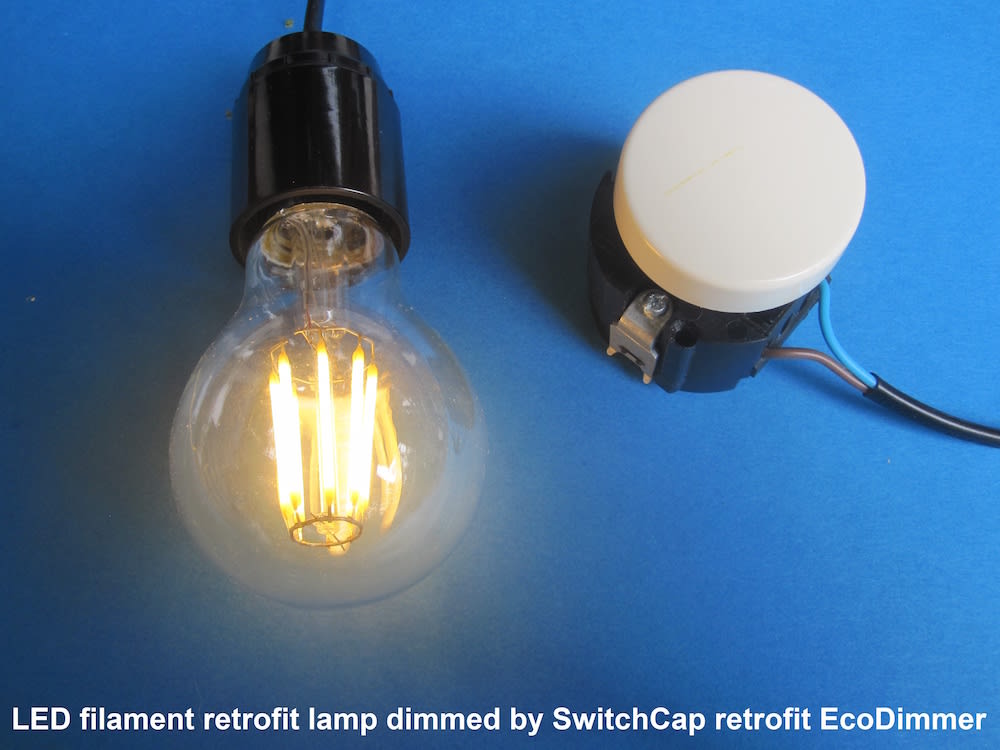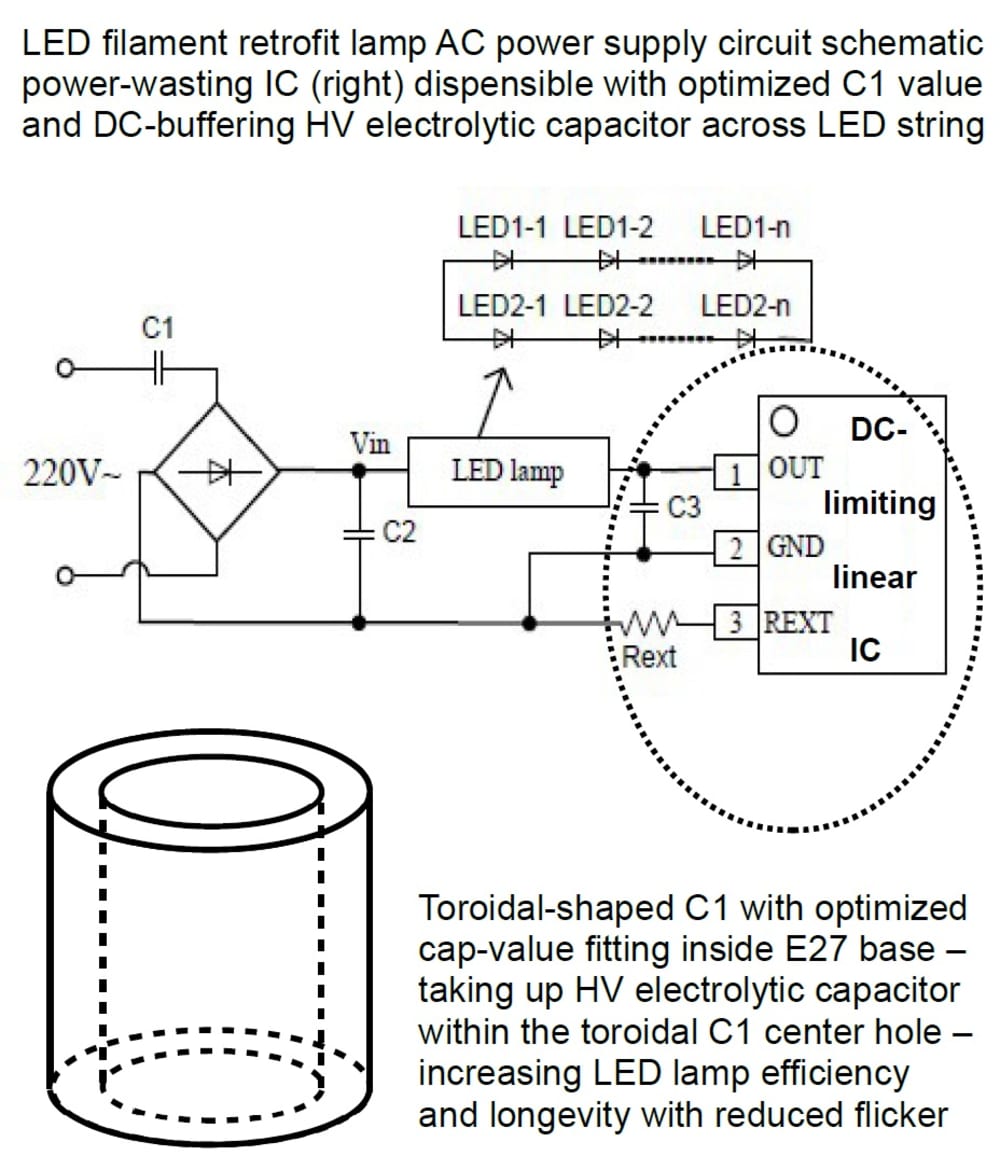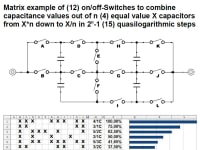Incandescent light bulbs are facing bans because they are a waste of energy and material due to extremely inferior efficiency and longevity. LED retrofit lamps seem to be the best choice and the new breed of LED-filament retrofit lamps with outstanding efficiency and omnidirectional light distribution obviously are the next best replacement of the Edison light bulb with the closest look and feel. Those are replacing 40 Watt incandescent light bulbs with just 4 Watt power consumption. However the DC-limiting linear IC within the E27 base still wastes approximately 20% of the power input, heating up the base and thus limiting the lifetime of the adjacent electrolytic buffer capacitor. Going beyond 4 Watt, losses grow worse: the 8 Watt version, supposed to replace the most-used 60 Watt incandescent light bulb, is increasing the portion of heating-wasted power just lasts for one month permanent operation. It could last for years if the DC-limiting IC could be replaced by a losslessly AC-limiting high voltage foil capacitor below 1 µF. Unfortunately both capacitors (the high voltage electrolytic buffer capacitor and the high voltage foil capacitor) would not fit inside the narrow E27 base side by side but if the foil capacitor was of a (manufacturing-proven) toroidal shape it could take up the electrolytic capacitor in it's center hole without heating it up and still leaving enough headroom within the E27 base for even much brighter lamps.
With increasing lamp brightness another handicap becomes apparent: missing dimmability of driverless LED retrofit lamps by means of conventionally installed phase-cut dimmers. However there is a solution to the problem – even increasing efficiency, longevity and light quality versus conventional approaches, deteriorating efficiency, which is a practically lossless capacitive retrofit step dimmer. Acceptable step resolution however would require a lot of foil capacitors with various fine-tuned non-standard capacitance values, which would not fit inside a standard switch box to replace the installed conventional dimmer or a light switch. One approach to overcome this density challenge would be to use a standard binary coded rotary switch selecting combinations of e.g. 4 capacitors to come out with 15 capacitance values in linear steps but as LEDs become ever more efficient the less current is forced upon them as a reverse effect of the efficiency droop phenomenon – in contrast to incandescent lamps – (http://spectrum.ieee.org/semiconductors/optoelectronics/the-leds-dark-secret) linear steps turn out to be less suitable rather than logarithmic steps and on top of that exact half or double values are not available as affordable standard high voltage foil capacitors. The alternative would be to combine n capacitors of the same capacitance value X in 2^n-1 logarithmic steps from X*n down to X/n by means of a pretty complex matrix switch which could be cheap in mass production but extremely expensive in providing appropriate precision tooling. However this proprietary switching principle would also allow to combine a higher number of smaller capacitors to make an increased logarithmic step resolution physiologically non-recognizable as a step function when replacing conventional dimmers to achieve various advantages.
Like this entry?
-
About the Entrant
- Name:Hans Diesing
- Type of entry:individual
- Software used for this entry:Excel
- Patent status:patented








